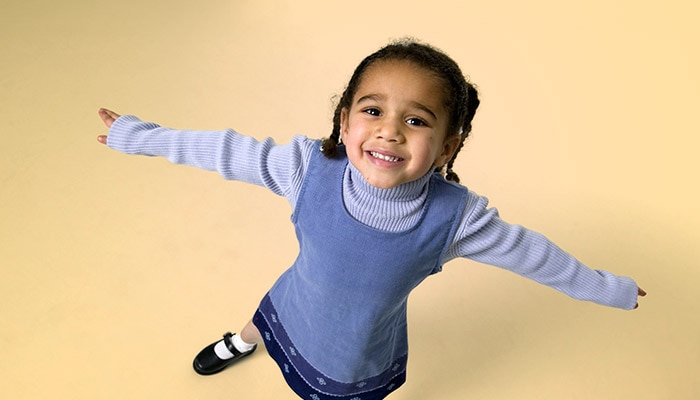While we believe that the books and resources recommended may be of value to you, keep in mind that these are suggestions only and you must do your own due diligence to determine whether the materials are appropriate and suitable for your use. PNC has no sponsorship or endorsement agreement with the authors or publishers of the materials listed.
ALL ABOUT ME

My Body and Me
Children will create life-sized portraits.

Lesson Objective
Children will explore the similarities and differences in their teachers and classmates body characteristics by creating life-sized portraits.
Science
What You'll Need
- Roll of large, light-colored paper (such as butcher paper)
- Chart paper
- Dark crayon
- Crayons or markers – 1 set per child
What To Do
- Begin a discussion about our bodies (see Did You Know).
- Using chart paper, make a list of the children’s answers to how each of our bodies is made (eyes, ears, etc.).
- Have the children turn to a partner and notice similarities and differences (notice different body parts, such as eyes, nose, and hair color).
- Explain to the children that they will be making life-sized portraits of themselves. Unroll a piece of paper large enough for a child to lie on. Have one of the children lay on the paper and trace the outline of her or his body.
- With the help of children and their suggestions, draw the parts of the body onto the tracing (eyes, ears, nose, mouth, fingers, toes, hair, etc.).
- Make tracings of each child with additional lengths of the paper.
- Have the children add details to their tracings with crayons or markers.
- Display the finished pictures throughout the classroom or in the hallway.
Resources
Home School Resources
Home educators: use these printable lesson PDFs to teach this lesson to your home schoolers. They're available in English and Spanish.
Content Provided By
Common Core State Standards Initiative – These lessons are aligned with the Common Core State Standards ("CCSS"). The CCSS provide a consistent, clear understanding of the concepts and skills children are expected to learn and guide teachers to provide their students with opportunities to gain these important skills and foundational knowledge [1]. Visit the CCSS


